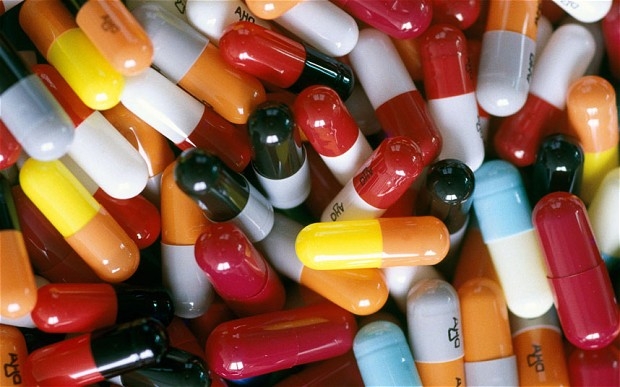
The discovery of Teixobactin could pave the way for a new generation of antibiotics because of the way it was discovered.
The first new antibiotic to be discovered in nearly 30 years has been hailed as a ‘paradigm shift’ in the fight against the growing resistance to drugs.
Teixobactin has been found to treat many common bacterial infections such as tuberculosis, septicaemia and C. diff, and could be available within five years.
But more importantly it could pave the way for a new generation of antibiotics because of the way it was discovered.
Scientists have always believed that the soil was teeming with new and potent antibiotics because bacteria have developed novel ways to fight off other microbes.
But 99 per cent of microbes will not grow in laboratory conditions leaving researchers frustrated that they could not get to the life-saving natural drugs.
Now a team from Northeastern University in Boston, Massachusetts, have discovered a way of using an electronic chip to grow the microbes in the soil and then isolate their antibiotic chemical compounds.
They discovered that one compound, Teixobactin, is highly effective against common bacterial infections Clostridium difficile, Mycobacterium tuberculous and Staphylococcus aureus.
Professor Kim Lewis, Director of the Antimicrobial Discovery Centre said: “Apart from the immediate implementation, there is also I think a paradigm shift in our minds because we have been operating on the basis that resistance development is inevitable and that we have to focus on introducing drugs faster than resistance
“Teixobactin shows how we can adopt an alternative strategy and develop compounds to which bacteria are not resistant.”
The first antibiotic Penicillin, was discovered by Alexander Fleming in 1928 and more than 100 compounds have been found since, but no new class has been found since 1987.
The lack of new drugs coupled with over-prescribing has led to bacteria becoming increasingly resistant to modern medicines.
Dame Sally Davies, the government’s Chief Medical Officer, said antibiotic resistant was ‘as big a risk of terrorism; and warned that Britain faced returning to a 19th century world where the smallest infection or operation could kill.
The World Health Oganisation has also classified antimicrobial resistance as a “serious threat’ to every region of the world which ‘has the potential to affect anyone, of any age, in any country”
However the new discovery offers hope that many new antibiotics could be found to fight bacterial infections.
Crucially, the scientists believe that bacteria will not become resistant to Teixobactin for at least 30 years because of its multiple methods of attack.
Testing on mice has already shown that the antibiotic works well at clearing infections, without side-effects. The team is now concentrating on upscaling production so that it could be tested in humans.
“Right now we can deliver a dose that cures mice and a variety of models of infection and we can deliver 10 mg per kg so it correlates well with human usage,” added Professor Lewis.
The breakthrough was heralded by scientists who said it could prove a ‘game-changer’ in the struggle against antimicrobial resistance.
Prof Laura Piddock, Professor of Microbiology at the University of Birmingham, said: “The screening tool developed by these researchers could be a ‘game changer’ for discovering new antibiotics as it allows compounds to be isolated from soil producing micro-organisms that do not grow under normal laboratory conditions.”
Prof Mark Woolhouse, Professor of Infectious Disease Epidemiology, from the University of Edinburgh added: “Any report of a new antibiotic is auspicious, but what most excites me about the paper is the tantalising prospect that this discovery is just the tip of the iceberg.
“Most antibiotics are natural products derived from microbes in the soil. The ones we have discovered so far come from a tiny subset of the rich diversity of microbes that live there.
“Lewis et al. have found a way to look for antibiotics in other kinds of microbe, part of the so-called microbial “dark matter” that is very difficult to study.”
Dr Angelika Gründling, Reader in Molecular Microbiology, Imperial College London said the discovery , ‘raises our hopes that new antibiotics can be brought to the clinics in the not too distant future.’
“The great hope is now that many more new antibiotics can be uncovered in a similar manner.”
Public Health England also welcomed the breakthrough.
“The rise in antibiotic resistance is a threat to modern healthcare as we know it so this discovery could potentially help to bridge the ever increasing gap between infections and the medicines we have available to treat them,” said Prof Neil Woodford, Head of Public Health England’s Antimicrobial Resistance and Healthcare Associated Infections Reference Unit.
The research was published in the journal Nature
Source: The Telegraph
